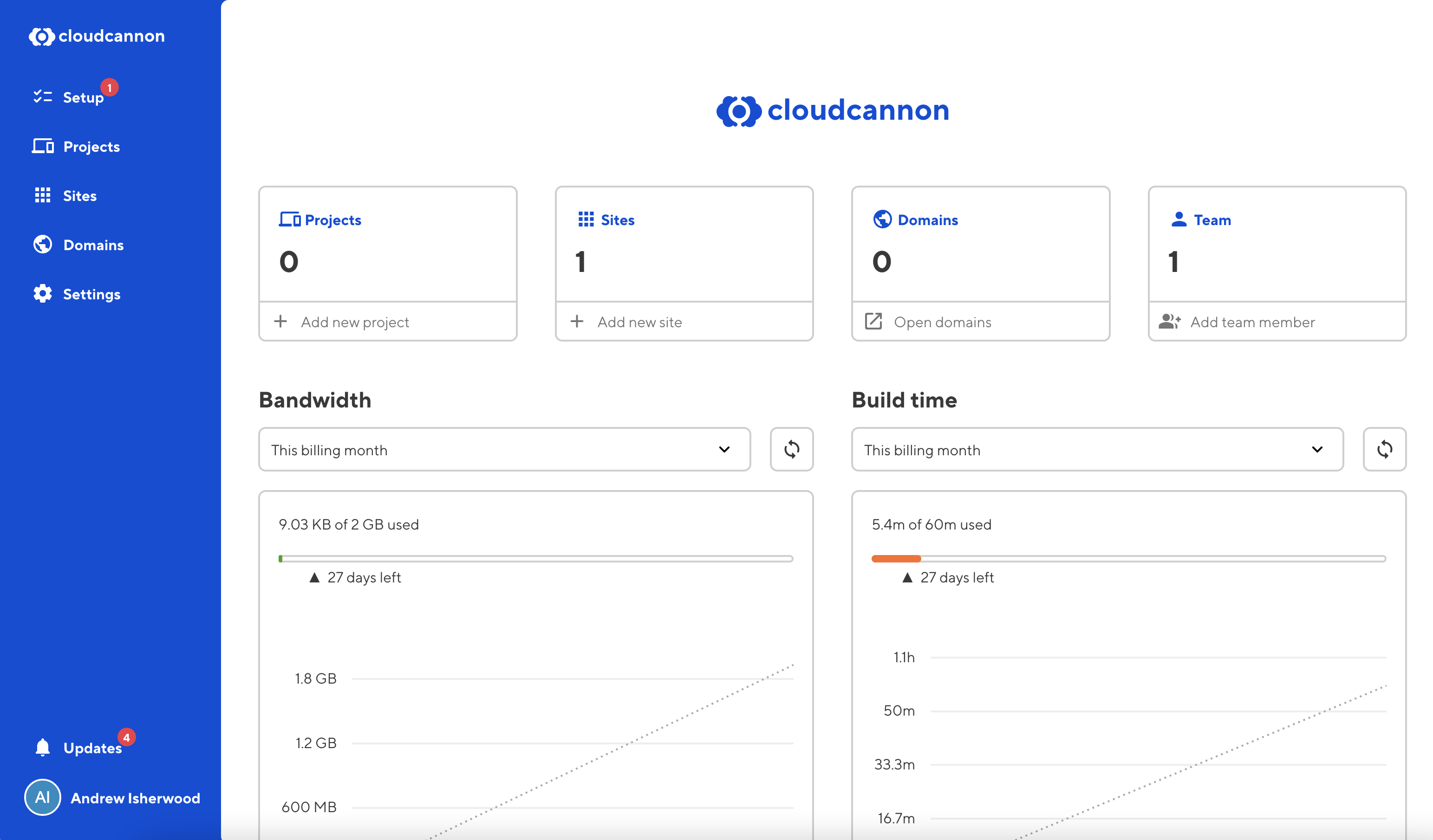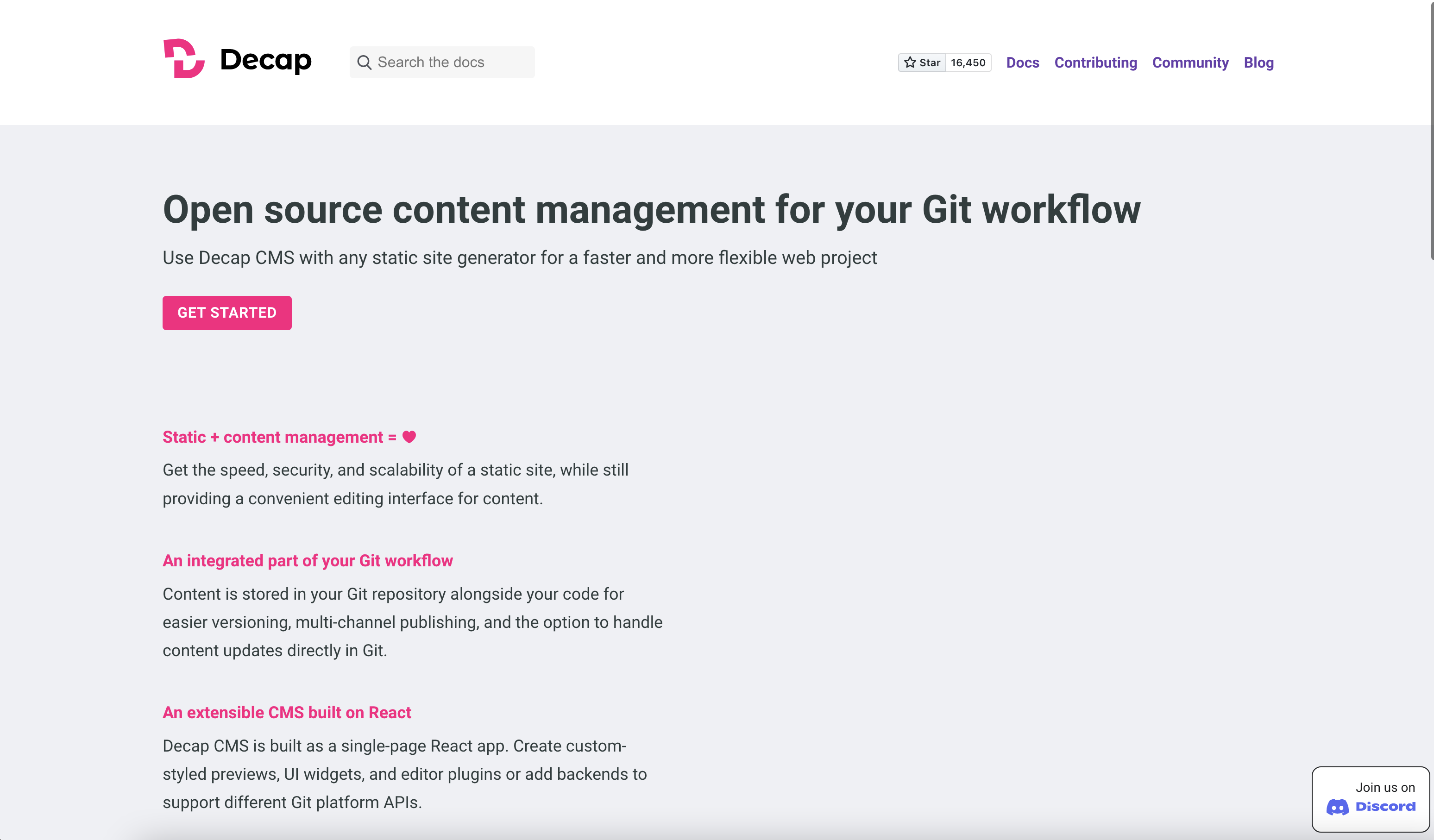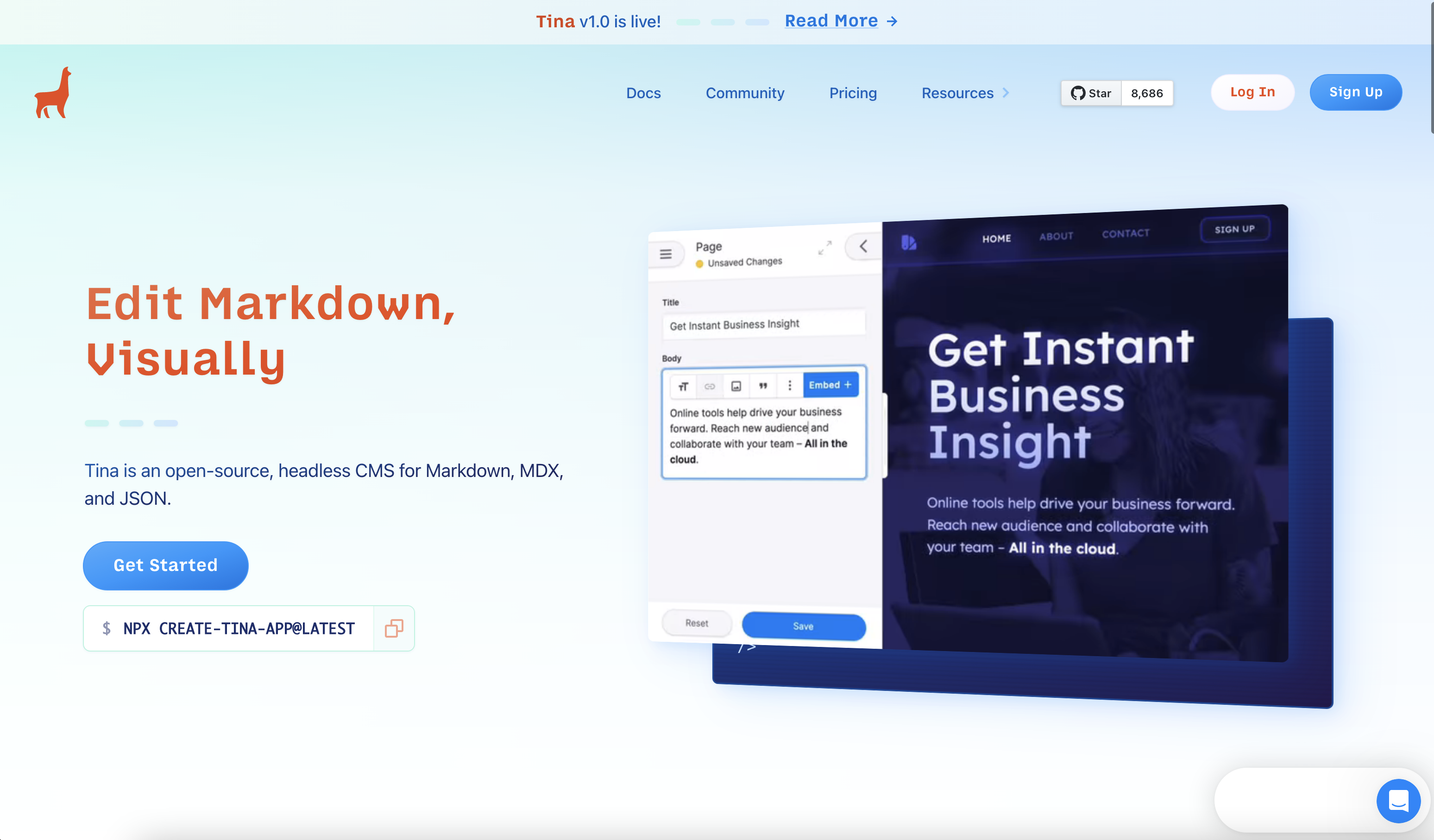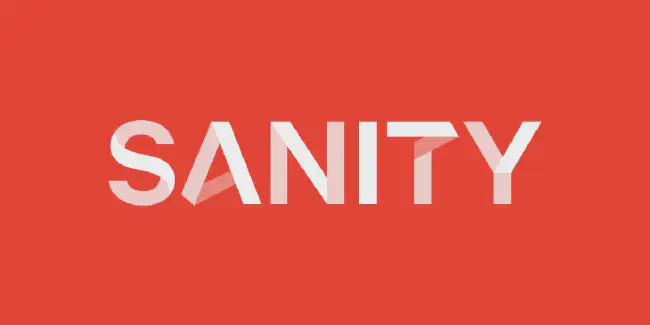Background
In december 2023, Forestry.io announced that they would be ending support for their git-based content management system (CMS) called Forestry on 22nd March 2023. This has left many website owners and developers, ourselves included, scrambling to find an alternative that can meet their needs. We are currently working together with our clients who are using Forestry to find an alternative headless CMS, so we have put together this short review of some of the most popular like-for-like alternatives out there for them and anyone else who is searching for an alternative git-based CMS.
Update: The Headless CMS landscape is a rapidly evolving one and in February 2023, Netlify announced that NetlifyCMS was to become DecapCMS and would be run by one of our fellow Netlify partner agencies, PM. Whilst unfortunate to see its passing, we are extremely glad that this project will continue. NetlifyCMS was the content management system that we first used for our Jamstack sites and it has a special place in our hearts. We are also seeing some forks of NetlifyCMS around such as staticCMS. So watch this space, as we give them all a whirl over the coming months.
But what is a git-based CMS, and what alternatives are available? In this article, we’ll take a look at three popular options that can help you transition away from forestry.io: CloudCannon, Netlify CMS DecapCMS and TinaCMS.
What is a Git-Based CMS?
A Git-based Content Management System (CMS) is a type of CMS that leverages the Git version control system to manage and store content. Unlike traditional CMS platforms, which often use databases to store content, a Git-based CMS stores content directly in a Git repository, typically in human-readable formats such as Markdown or plain text.
Some benefits of using a Git-based CMS include:
Version Control: Git provides powerful version control capabilities, allowing you to track changes to your content, revert to previous versions, and collaborate with others more effectively.
Security and Backup: Since your content is stored in a Git repository, it can be easily backed up and restored. Additionally, access control and security features of Git help protect your content.
Collaboration: Git makes it easy for multiple team members to work on content simultaneously, while also providing tools for resolving conflicts and merging changes.
Flexibility: A Git-based CMS can be used with static site generators or other build tools, allowing for a wide range of deployment options and customization.
Decoupling: Storing content in a Git repository decouples it from the CMS, which can make it easier to switch between CMS platforms or use multiple CMS tools with the same content.
Popular Alternatives to Forestry.io
As a counterpoint to our other review of headless Content Management Systems in 2023, we have tried to evaluate a couple of alternatives to Forestry on a like–for-like basis. So we have only chosen git-based CMS here. Having used Forestry for the last three years we feel it’s most redeeming features were:
- Ease of implementation
- Free plan available
- Drag and drop page builder
- Visual preview
- Git-based for version control
On our quest for an alternative to Forestry we have tried to find CMS that fulfills all of these criteria. If you’d like to see older CMS reviews we have done, you can find them here
CloudCannon

CloudCannon is an all-in-one Content Management platform designed specifically for teams who use static site generators like Jekyll or Hugo. Cloudcannon CMS is an incredibly powerful and flexible content management system that makes it easier than ever before to manage website content. It allows you to quickly and easily create, edit, and update your website’s pages, using a visual builder that eliminates the need for coding.
The main benefit of using Cloudcannon CMS is its ability to provide superior content control in a very user-friendly way. With its drag-and-drop user interface, it’s easy to create beautiful webpages with no HTML or CSS knowledge necessary - allowing people of all technical abilities to get up and running in no time. Additionally, the platform allows you to manage multiple sites from one dashboard, making it ideal for clients who need help managing several websites at once.
Cloudcannon CMS also provides top-notch security features to keep your data safe and secure - including support for two-factor authentication. This ensures that only authorized personnel can access your site’s information - thus giving you peace of mind knowing that your valuable data is secure from malicious attackers. Additionally, Cloudcannon CMS stores your source code offsite via git-based version control - which allows you to make changes without affecting any live sites, as well as view diffs between versions for easy comparison.
On top of this, Cloudcannon CMS has extensive SEO capabilities built into the platform - including options for creating meta descriptions for each page on your website as well as automated sitemaps (for submission to search engines). This really boosts the visibility of your website by ensuring that search engine bots can quickly index all site pages in order to display them prominently in searches.
To sum up, Cloudcannon CMS is an amazing tool which provides powerful content control capabilities in an intuitive manner while also offering unbeatable security features and SEO optimization tools. It’s a great choice if you’re looking for a headless, git-based CMS with a visual builder - and even works with websites built with the Hugo!
Further reading: In-depth Cloudcannon Review
Update 21/04/23 - We have now helped several clients migrate to Cloudcannon and they are really enjoying the Visual building experience. Here is what Charlie from Eflow Global had to say about it after using it for the last month.
“being able to edit css from within CloudCanon and view live previews on the staging site is so useful! I’m finding it to be a really good workflow…I think this is what I’ve been shooting for from the beginning really. A good mix of a stable static site with easy editability”
Decap CMS vs NetlifyCMS
 Back in December 2022 We noted our reservations that the NetlifyCMS project may be stale. The last update to the github repository was back in May 2022 and there are currently 81 unresolved pull requests. So we weren’t surprised when in February Netlify annonced that NetlifyCMS was moving Decap CMS. We haven’t had a chance to use it yet but we do hope to do a full implementation review in the fullness of time.
Back in December 2022 We noted our reservations that the NetlifyCMS project may be stale. The last update to the github repository was back in May 2022 and there are currently 81 unresolved pull requests. So we weren’t surprised when in February Netlify annonced that NetlifyCMS was moving Decap CMS. We haven’t had a chance to use it yet but we do hope to do a full implementation review in the fullness of time.
In the meantime here are a few choice excerpts about Decap CMS from their docs
Decap CMS (formerly Netlify CMS) is an open source content management system for your Git workflow that enables you to provide editors with a friendly UI and intuitive workflows. You can use it with any static site generator to create faster, more flexible web projects. Content is stored in your Git repository alongside your code for easier versioning, multi-channel publishing, and the option to handle content updates directly in Git.
NetlifyCMS vs DecapCMS
The folks at Netlify created Netlify CMS to fill a gap in the static site generation pipeline. There were some great proprietary headless CMS options, but no real contenders that were open source and extensible—that could turn into a community-built ecosystem like WordPress or Drupal. For that reason, Netlify CMS is made to be community-driven, and has never been locked to the Netlify platform (despite the name). In February 2023 Netlify CMS became Decap CMS.
TinaCMS

TinaCMS is the evolution of what was Forestry and is one of the most exciting new developments in content management systems. It’s a headless, git-based CMS that makes it easier than ever to manage websites and applications online. With TinaCMS, developers can easily create an intuitive user experience with dynamic content editing capabilities and collaborate in real-time with stakeholders on website design and development. Be aware however, that as far as I understand, unless you have a react-based site, the visual editing is currently severely limited and you will only have a basic CMS.
In terms of features, TinaCMS offers a robust set of tools for website creators and developers to take advantage of. Users can easily create custom fields, drag-and-drop components, add images and videos, plus they have access to version control with every change they make. This helps ensure no changes are ever lost or overwritten by mistake. Additionally, TinaCMS allows users to preview live changes before publishing them or saving them as drafts.
In addition to its powerful features, TinaCMS is incredibly secure and easy to use. The system was built using the best security practices available and it offers users granular control over permissions for editing content across multiple sites. Additionally, it’s also highly extensible so developers can customize the system for their specific needs without having to write any code from scratch.
Overall, TinaCMS is an excellent choice for developers looking for a powerful and secure way to manage their websites and applications online without needing any coding knowledge or skillsets. Its intuitive user interface makes it simple enough for anyone involved in the project to understand how it works while giving experienced developers plenty of options for customization. With its excellent security protocols and ability to quickly publish changes live or save them as draft versions, TinaCMS has quickly become one of the most popular content management systems on the market today.
Conclusion
As you can see, there are plenty of alternatives available if you’re looking for something other than forestry.io after it ends support in March 2022 .Whether you’re looking for a fully featured all-in-one platform like CloudCannon, something simple yet powerful like Netlify CMS, or something customizable like TinaCMS , there’s sure to be something out there that fits your needs perfectly! And if you’re still struggling to find the right fit and are coming from WordPress, you might find our article about the best alternatives to WordPress in 2023, useful further reading. Don’t forget that these solutions also come with plenty of helpful resources such as tutorials , documentation , forums , etc., but don’t hesitate to reach out if you have any questions! Good luck finding your perfect fit!






